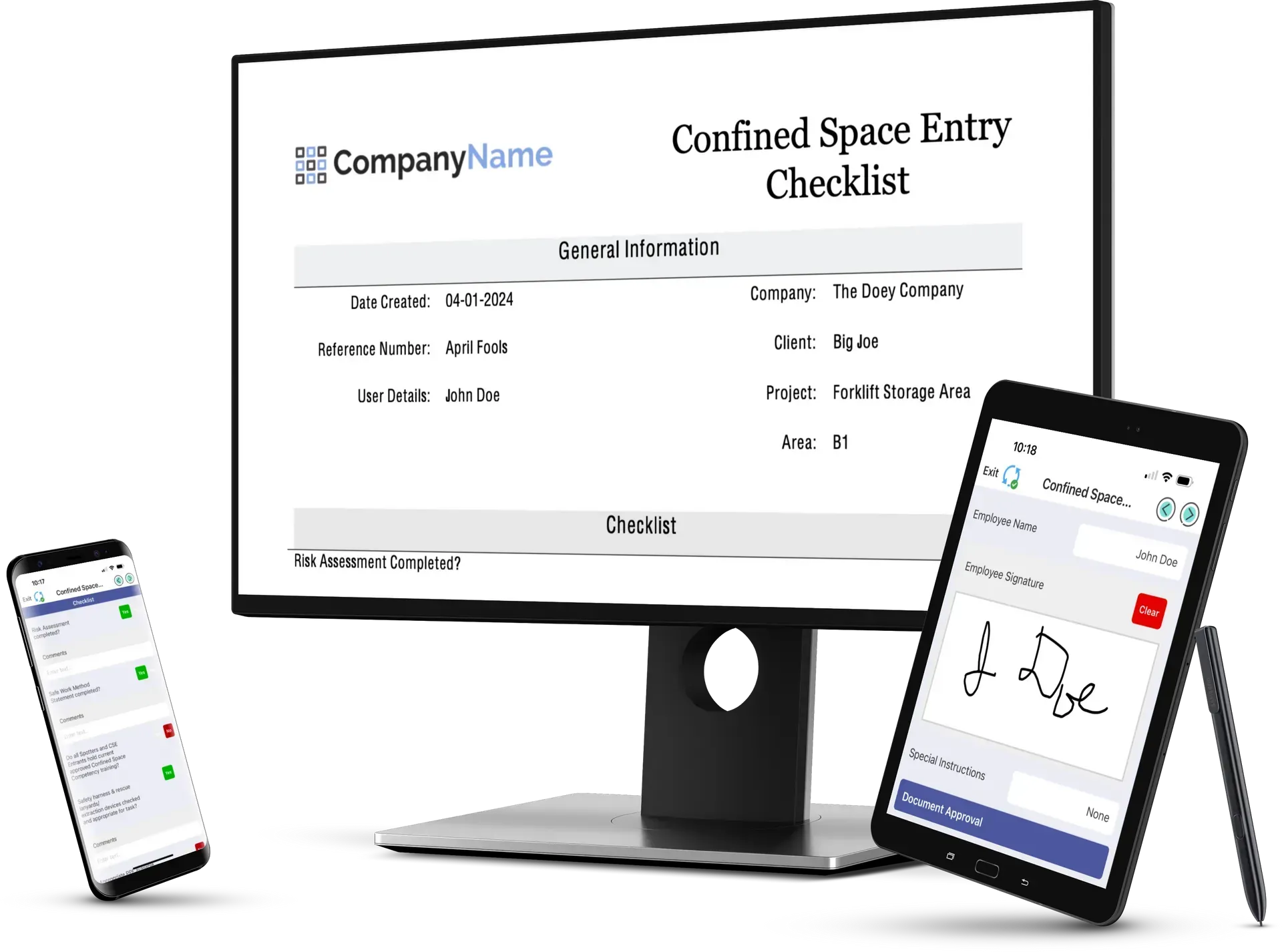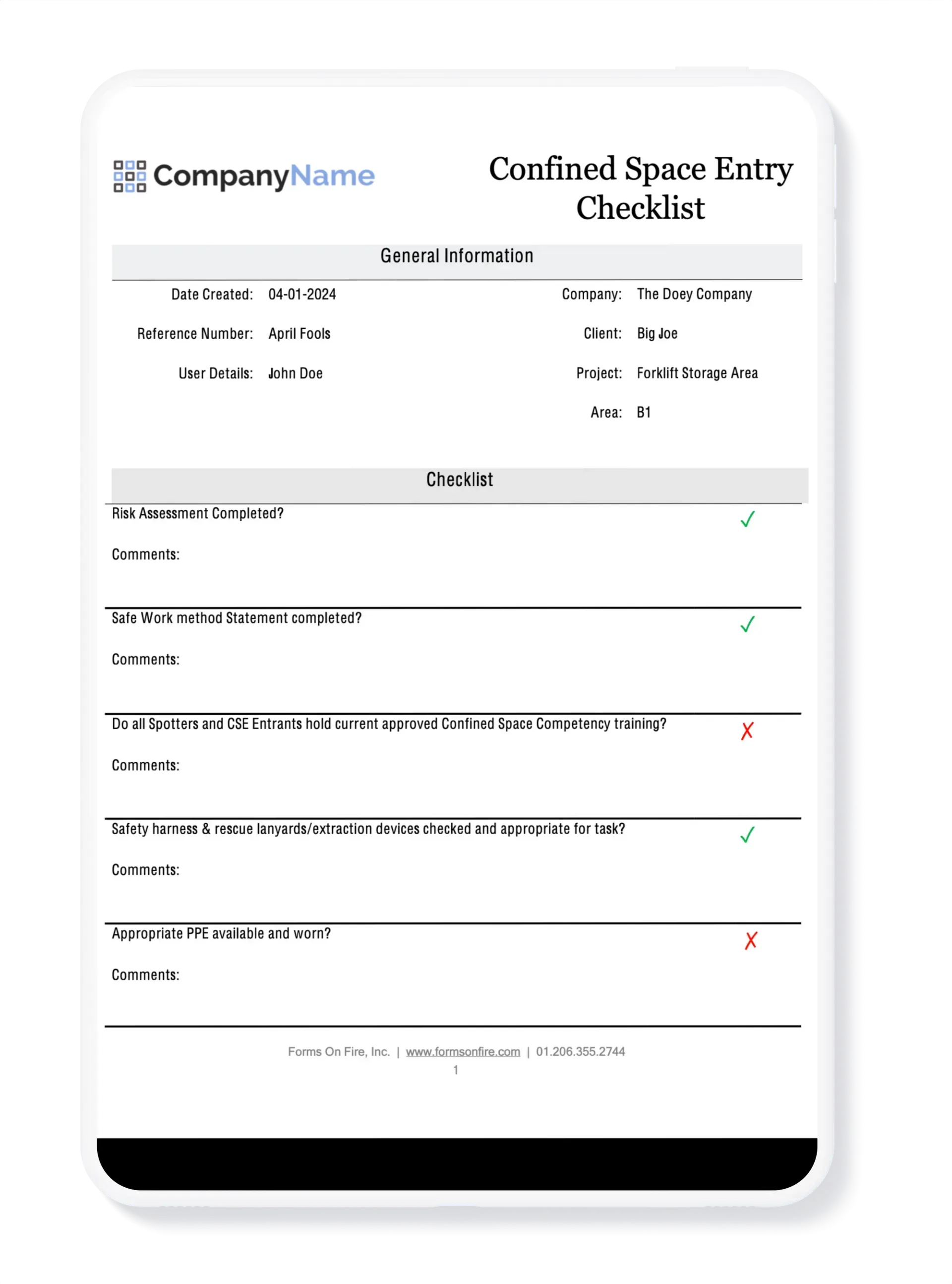Unraveling the Confined Entry Space Checklist:
A Comprehensive Guide

Introduction
A Confined Entry Space Checklist is a vital tool in ensuring the safety and well-being of workers who are required to enter and work in confined spaces. These spaces can be hazardous due to factors such as limited access and egress, poor ventilation, and the presence of toxic substances. A well-prepared checklist can help mitigate risks by providing a systematic approach to identifying and addressing potential dangers. This blog post will delve into the importance of a Confined Entry Space Checklist, its components, and how it can contribute to a safer work environment.
What is a Confined Entry?
A Confined Entry is a term used to describe a space that is large enough for a worker to enter and perform tasks but has limited means of entry or exit and is not designed for continuous occupancy. Examples of confined spaces include tanks, silos, pipelines, and sewers. Due to the inherent dangers associated with these spaces, it is crucial to follow a comprehensive checklist to ensure the safety of workers.
Why is a Confined Entry Space Checklist Necessary?
The primary purpose of a Confined Entry Space Checklist is to ensure that all necessary precautions have been taken before entering a confined space. These spaces can pose various risks, including:
- Toxic gases or fumes: Confined spaces may contain hazardous gases or fumes, which can lead to serious health issues or even death.
- Oxygen deficiency: Insufficient oxygen levels can cause workers to lose consciousness or suffer from respiratory problems.
- Flammable or explosive atmospheres: The presence of flammable gases, vapors, or dust can create a fire or explosion hazard.
- Engulfment or entrapment: Workers may become trapped or engulfed by loose materials such as sand, grain, or coal.
- Physical hazards: Confined spaces may have limited visibility, extreme temperatures, or dangerous machinery.
A well-designed checklist can help minimize these risks by ensuring that all necessary safety measures have been taken and that all personnel involved are aware of the potential hazards.
What Does a Confined Entry Space Checklist Look Like?
A Confined Entry Space Checklist typically includes the following questions:
- Risk Assessment completed?
- Safe Work Method Statement completed?
- Do all Spotters and CSE Entrants hold current approved Confined Space Competency training?
- Safety harness & rescue lanyards/extraction devices checked and appropriate for task?
- Appropriate PPE available and worn?
- Are all personnel trained (CPR, Fire)? Advisable not mandatory
- Gas detectors check/calibrated?
- Atmospheric test carried out and recorded?
- Water hose run to job on site & tested/left running?
- Earth leakage device used?
- Ventilation/extraction supplied?
- Telephone/two-way radio required / available?
- Safety Watch posted while person in restricted area/confined space entry?
- Traffic segregation at least 3m away from entry/exits to confined space.
- Is portable electrical equipment tagged and current date?
- Stand-by person identified, trained, and a system for relief in place?
- All equipment intrinsically safe?
- Are there any harmful materials?
- Safety Rescue equipment in place?
- Is Hot Work going to be carried out?
- Respiratory equipment checked and charged?
- Welding Machine/gas cylinders located (not within 8m of any drain)?
- Is there safe access/egress?
- Fire watch required?
- Is fixed lighting systems in service / available?
- Locks, tags & warning notices have been fixed to means Isolation?
The checklist should also include the following information about the person who performed and approved the checklist:
- Name
- Contact Number
- Signature
- Place
- Date of Checklist
This information ensures accountability and allows for easy follow-up in case of any issues or concerns.

What is a Confined Entry Space Checklist Report?
A Confined Entry Space Checklist report is a comprehensive document that details the results of the checklist, including any identified hazards, corrective actions taken, and any additional recommendations. This report serves as a record of the safety measures taken and can be used for future reference or to demonstrate compliance with relevant regulations.

Where Can I Get a Confined Entry Space Checklist?
You can obtain a Confined Entry Space Checklist from various sources, including industry associations, safety equipment suppliers, and online platforms such as eForms Mobile where you can start a free trial to access their comprehensive checklist templates.
How Does a Confined Entry Space Checklist Encourage Following Rules and Regulations?
By providing a structured approach to identifying and addressing potential hazards, a Confined Entry Space Checklist encourages adherence to rules and regulations. It helps ensure that all necessary safety measures are in place and that workers are aware of the potential risks involved in entering a confined space. This promotes a culture of safety and helps prevent accidents and injuries.
What is the Difference Between a Confined Entry Space Checklist and Other Safety Inspection Checklists?
A Confined Entry Space Checklist is specifically designed to address the unique hazards associated with confined spaces. While other safety inspection checklists may cover general workplace safety, they may not address the specific risks and challenges associated with confined spaces. A Confined Entry Space Checklist focuses on factors such as ventilation, gas detection, and rescue procedures, which are essential for ensuring the safety of workers in these environments.
Conclusion
A Confined Entry Space Checklist is an essential tool for ensuring the safety of workers who are required to enter and work in confined spaces. By providing a systematic approach to identifying and addressing potential hazards, this checklist helps prevent accidents and promotes a culture of safety. It is vital for companies to invest in the proper training and resources to ensure that all employees are familiar with the checklist and its importance. By doing so, they can create a safer work environment and minimize the risks associated with confined spaces.












